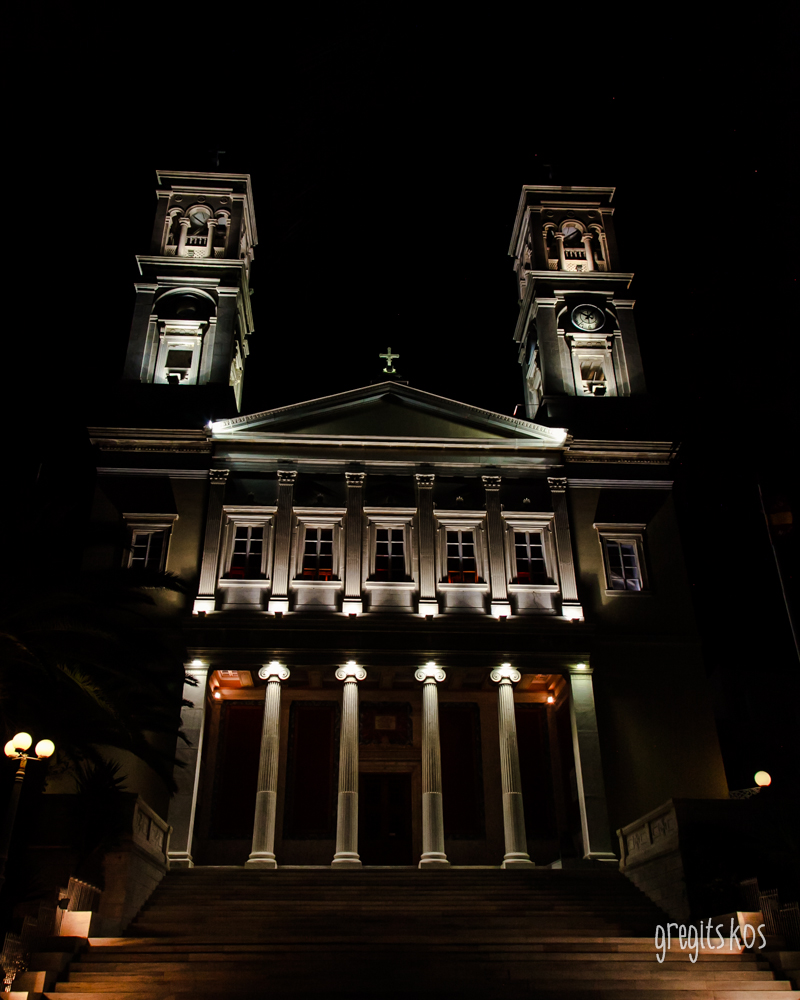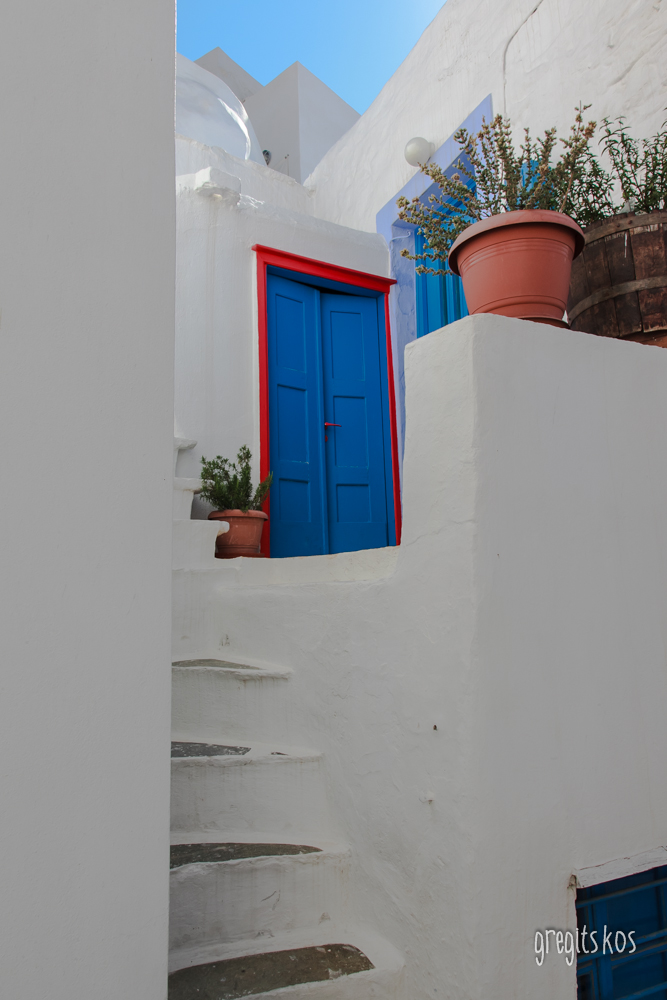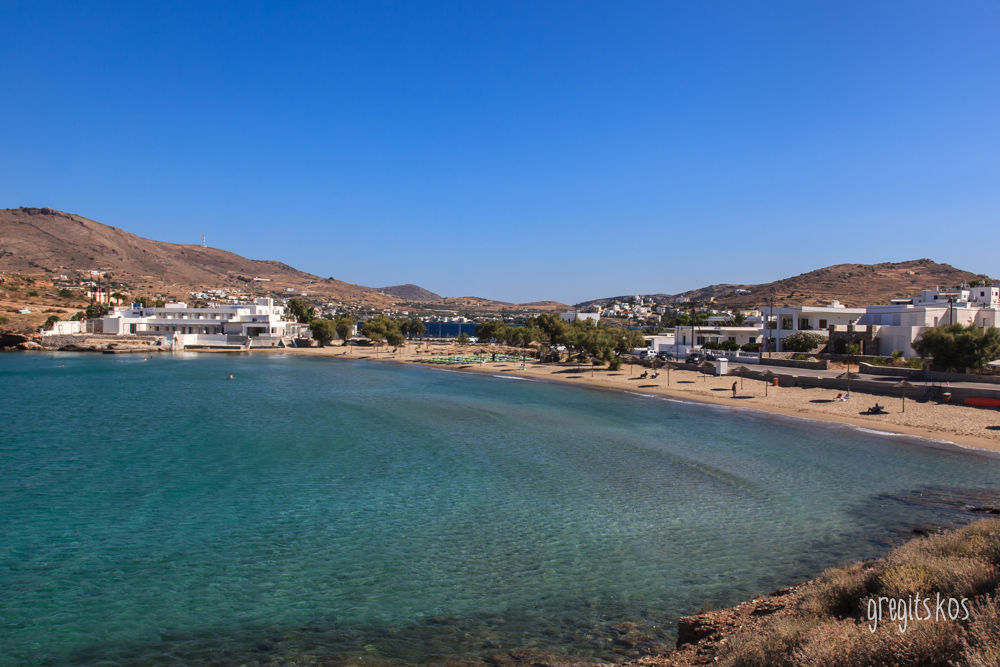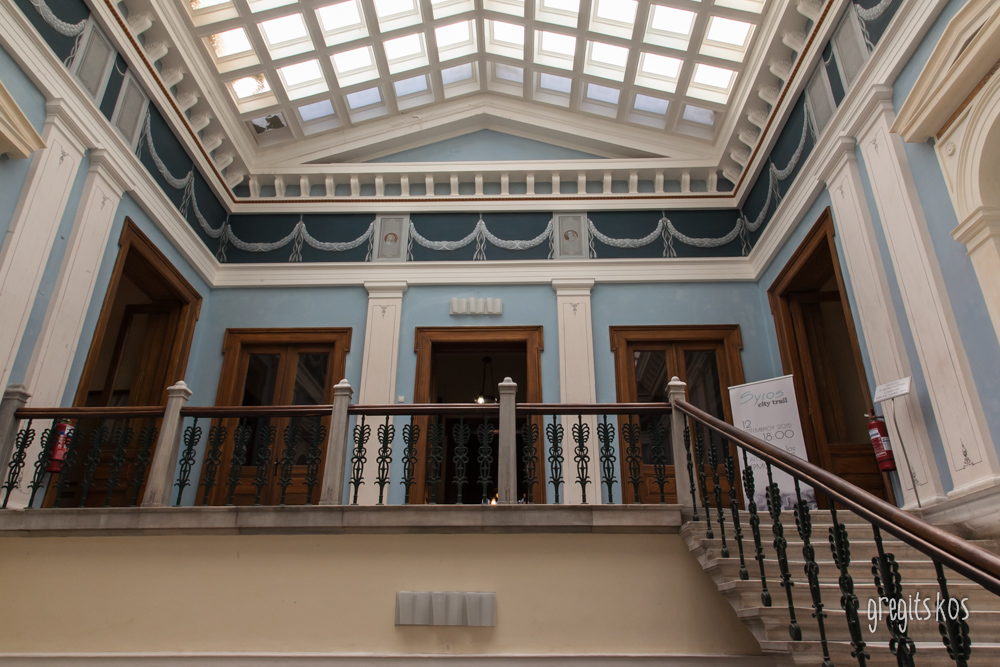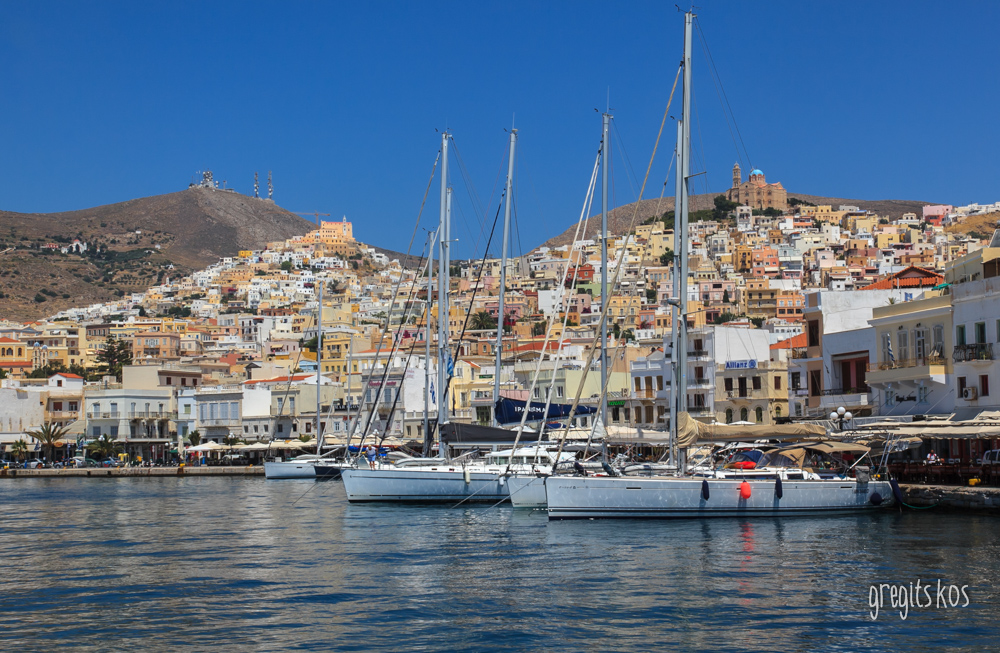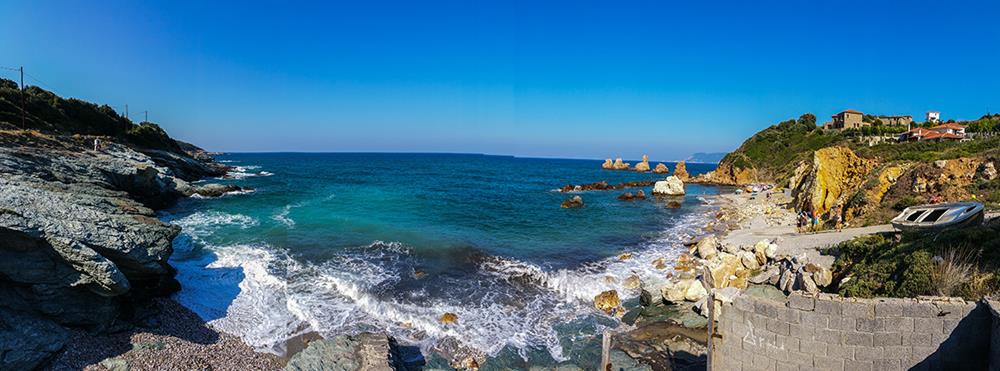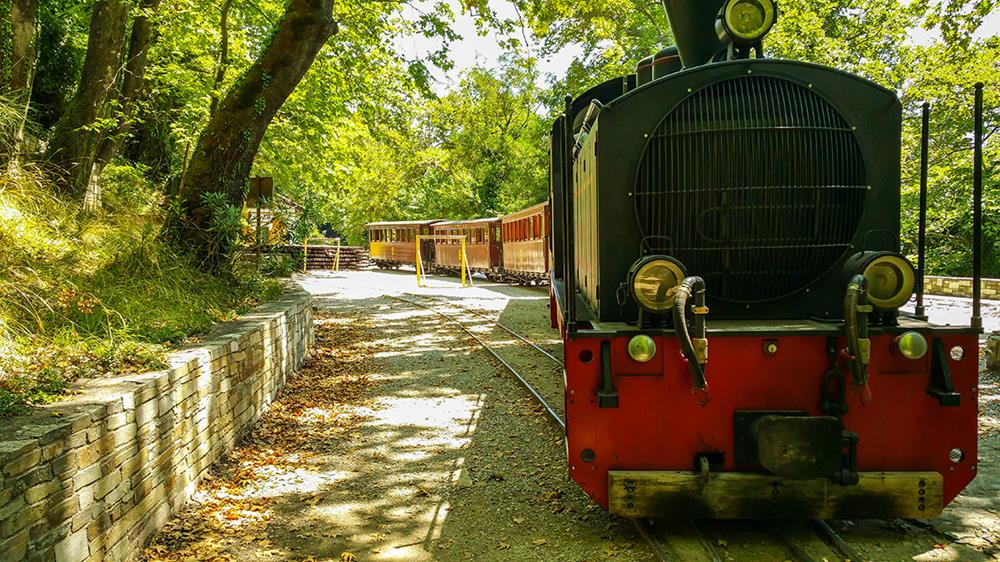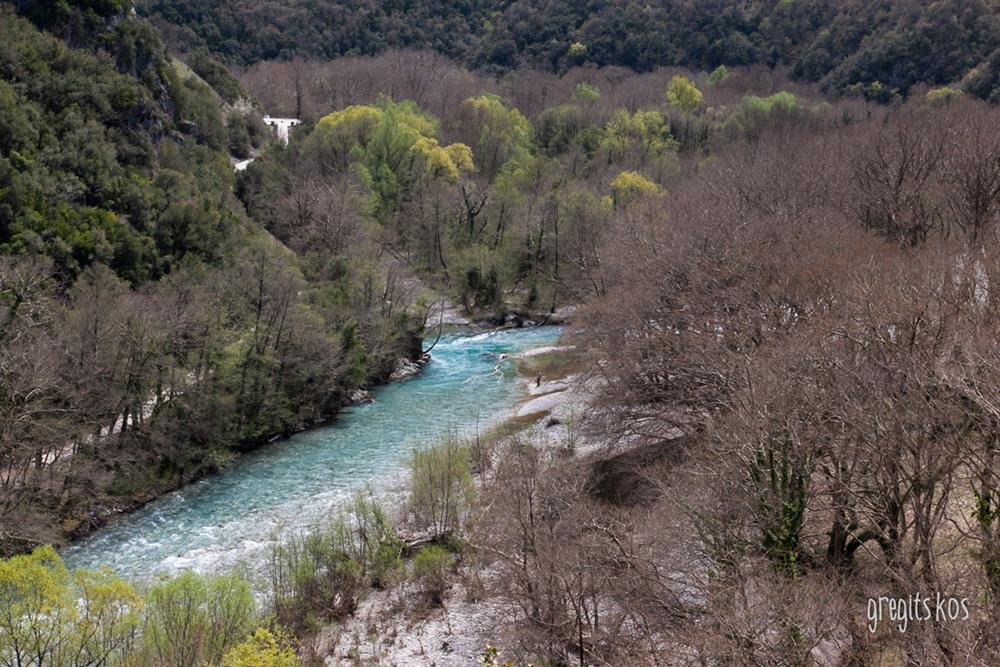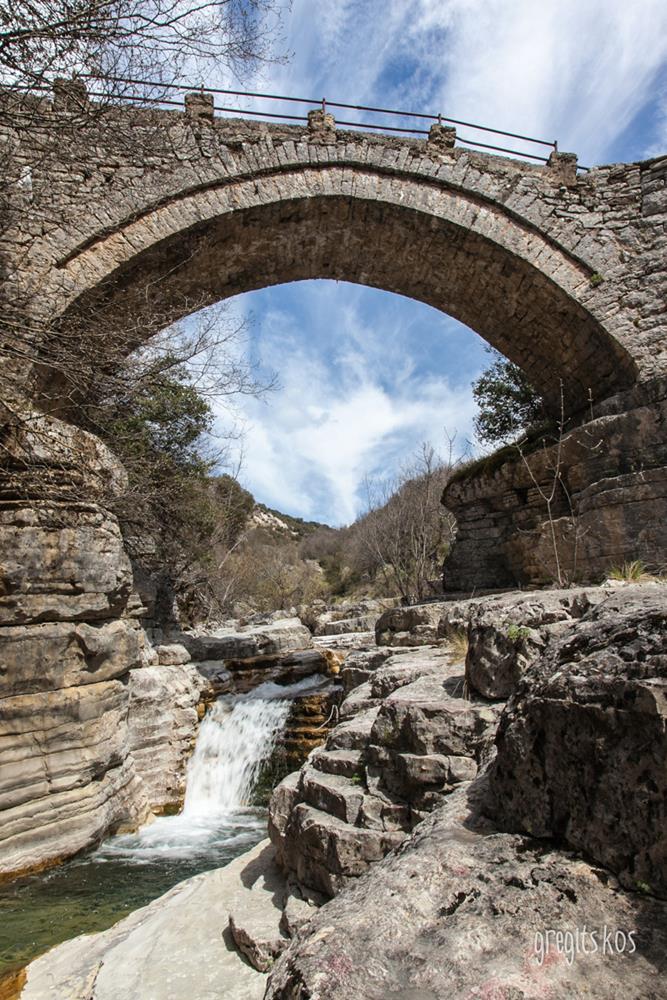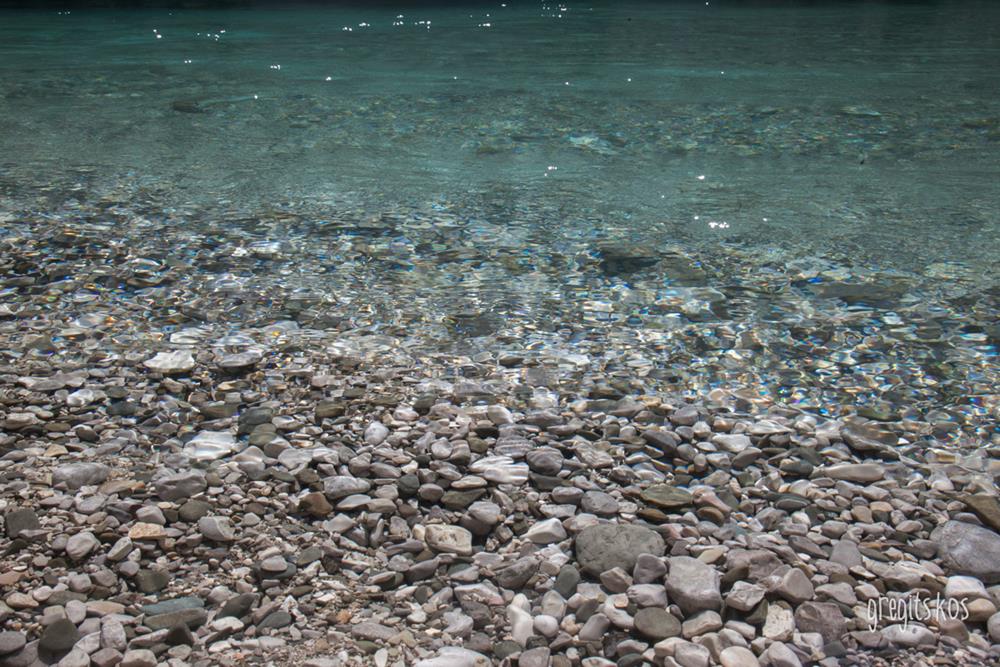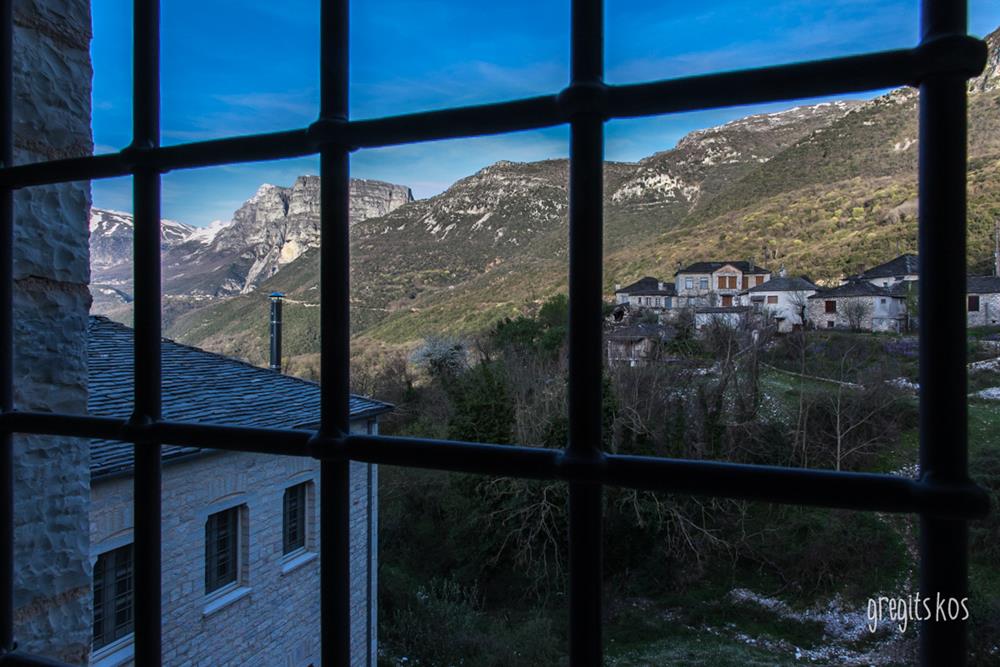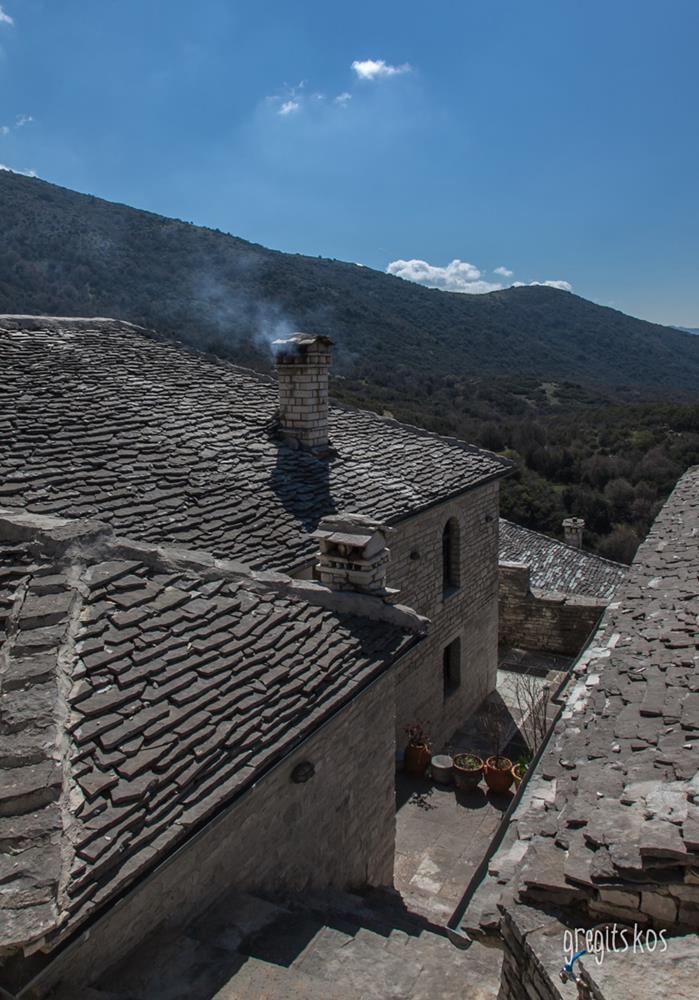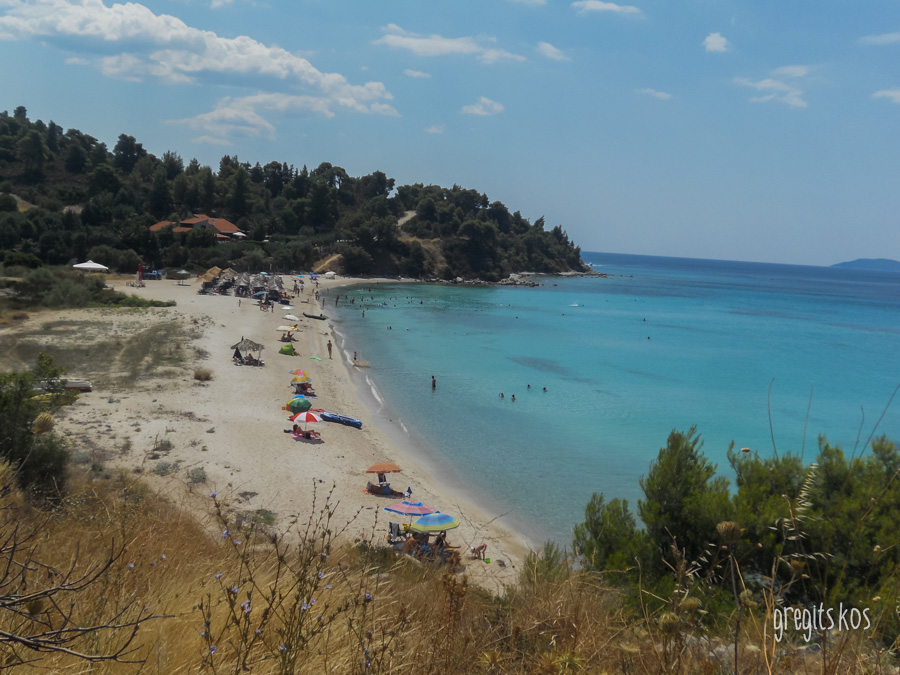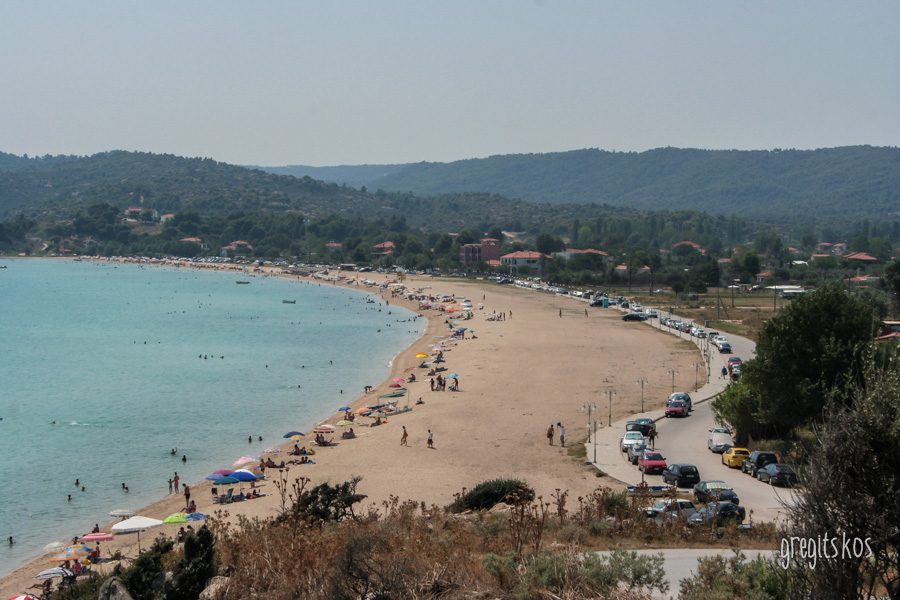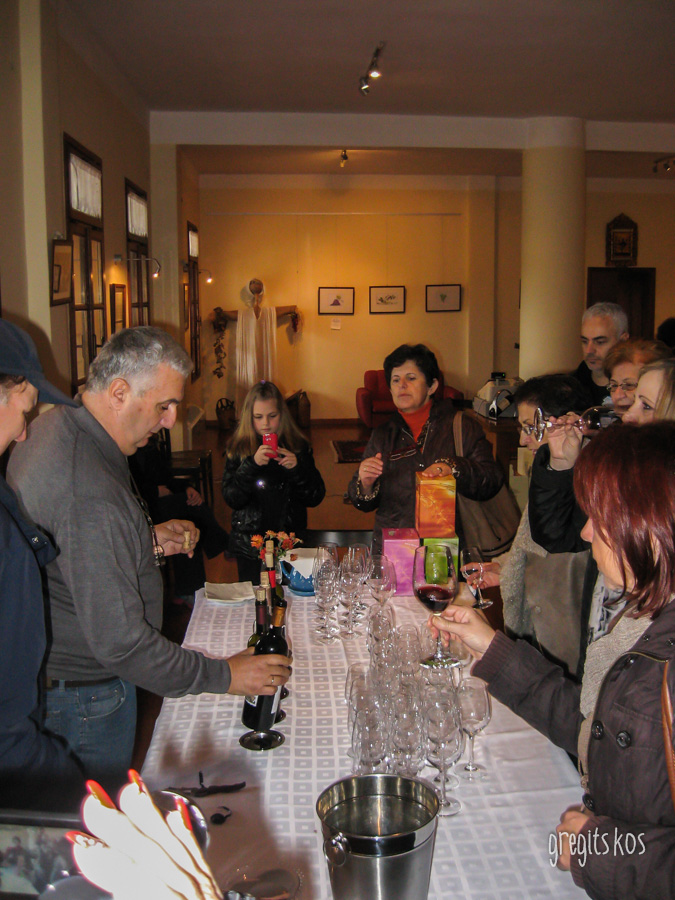
Ioannina – The city of legends
“Christmas and Ioannina blend perfectly!”, I would say to anyone who asked me. The choise to spend a weekend there between Christmas and New Year belonged to our 12-year daughter Helen. She prefers city traffic and strolling around the market streets rather than the mountainous villages we like. The capital of Epirus with its lake was an ideal choise!
 Less than a 2 -hours comfortable drive far from Veria and at 12.00 we were at the hotel “Politeia” in the city center (http://www.etip.gr/en/home). Our room on the ground floor facing the beautiful courtyard was very cozy. Very nice for a start!
Less than a 2 -hours comfortable drive far from Veria and at 12.00 we were at the hotel “Politeia” in the city center (http://www.etip.gr/en/home). Our room on the ground floor facing the beautiful courtyard was very cozy. Very nice for a start!
Half an hour later we were in the boat to the lake island . Departing every half hour or more frequently if the traffic is increased! The ticket is 2 euros (1 euro for children up to 8 years). Sailing on the calm waters of Lake Pamvotis that defines the nature, the climate and the character of the city took us there, in less than 10 minutes. Through streets with old stone houses, small shops with souvenirs and silverware, we were led to the monastery of Ag. Panteleimon (17th century), where Ali Pasha was murdered. Today it functions as a folklore museum (2 € entrance), where the style of a pre-revolutionary mansion of the area is represented. Besides important exhibits (documents, weapons, jewelry …) many exhibited paintings represent Ali Pasha. You can see the holes on the floor of the first floor from where the bullets found their way and fatally wounded Ali. We were impressed!
We were informed that, in addition to the monastery of Saint Panteleimon, there are five other monasteries on the island, with the monastery of St. Nicholas of Filanthropinon, 13th c., being one of the most important post-Byzantine Greek monuments with very beautiful post-Byzantine frescoes of the 16th century, as well as coveralls depicting the seven philosophers of Antiquity: Solon, Plato, Aristotle, Thucydides, Plutarch, Chilonos and Apollonius.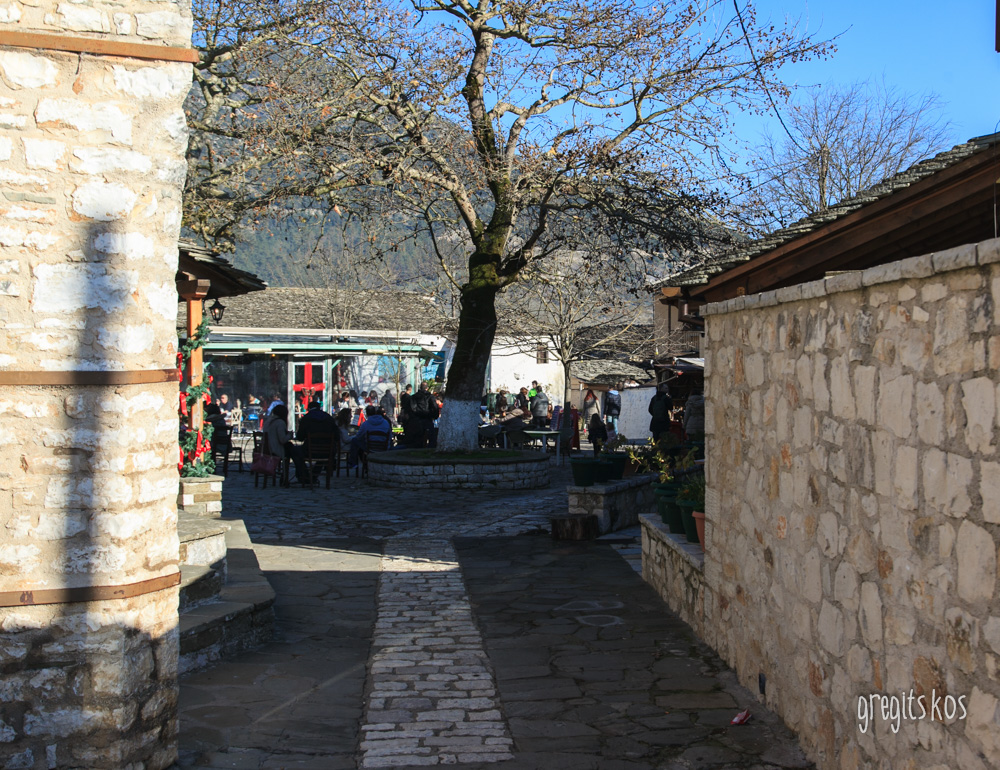
At the paved square with the tall trees people were having coffee or eating fresh fish at the taverns with the aquariums, where you can choose the lobster or eel you would you like to eat. While outside of the traditional delicacies you can enjoy frog feet, a specialty of the area.
After buying some traditional syrup sweets, we chose to return to Ioannina. We took the road to the center on foot. In “Averof” street we stopped to dine at “Masa roufa” restaurant. We barely found a table in the loft. Very large portions, tasty food and good prices. On our departure the city seemed different with the Christmas decorations. Very beautiful narrow streets, shops, galleries full with people shopping in the stores. A rich market! A coffee on the “Liampei” stoa ended the night.
The next morning, the fog was sitting over the city until almost noon, and a journey to “Bourazani” (we watched a documentary about it on television the night before), led us to the decision to take the road north towards to Kalpaki and the Albanian borders. Soon we arrived at the War Museum of Kalpaki, where we were guided at the exhibits and later we took left road at the junction to Bourazani, we passed the bridge and turned left towards the borders. Customs station “Mertziani” said the sign. We were 12 km. far from Konitsa and 58 from Ioannina. On the way back we stopped at the bridge. Next to the stone bridge there is a military iron bridge over the river Aoos.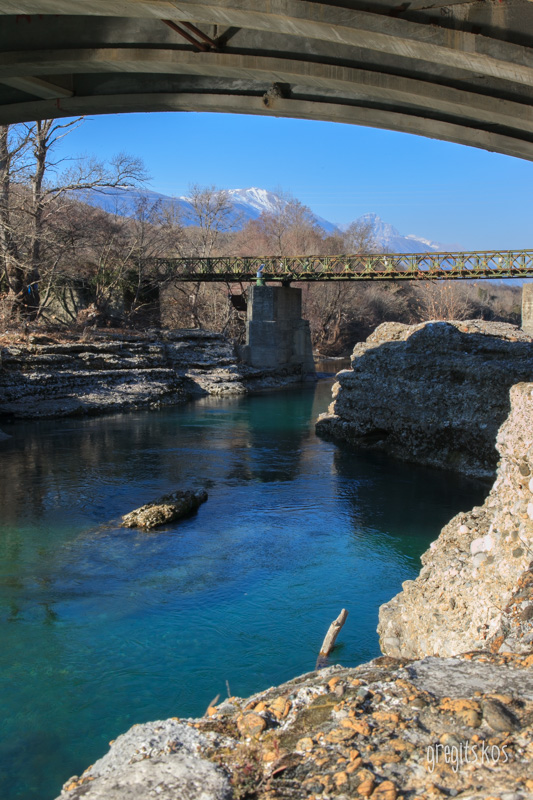 Shortly after we turned right towards the monastery “Panagia Molivdoskepasti”. Lovely, harmonized with the landscape, 400 meters from the Albanian border. Everything frozen all around. The thick layer of frost looked like snow. We continued to the village Bourazani. The road was icy and we didn’t go further. On the way back we stopped at the “Bourazani” hotel. They informed us that they have their own Environmental Park and Natural History Museum, where the entrance was 12 euros. We preferred to visit the river springs nearby and continue to Ioannina. It was around lunch time and turned left to “Asprangeli” looking for the hostel “Virginia”. It’s built on the hillside, in a very nice setting and was so beautifully decorated . We tasted “pork prasoselino” and “flour pie” both delicacies of the area. We really enjoyed it!
Shortly after we turned right towards the monastery “Panagia Molivdoskepasti”. Lovely, harmonized with the landscape, 400 meters from the Albanian border. Everything frozen all around. The thick layer of frost looked like snow. We continued to the village Bourazani. The road was icy and we didn’t go further. On the way back we stopped at the “Bourazani” hotel. They informed us that they have their own Environmental Park and Natural History Museum, where the entrance was 12 euros. We preferred to visit the river springs nearby and continue to Ioannina. It was around lunch time and turned left to “Asprangeli” looking for the hostel “Virginia”. It’s built on the hillside, in a very nice setting and was so beautifully decorated . We tasted “pork prasoselino” and “flour pie” both delicacies of the area. We really enjoyed it!
On our way back we thought of visiting the castle before it got dark. It’s the old town of Ioannina offering you the feeling of a bygone era, full of secrets and legends. Unique attractions buildings such as “House Matei Hussein”, the “Ottoman mosque of Veli Pasha”, across the historic center of Ioannina and the town’s castle (built in 528 AD). The walls enclose the old town, two mosques and several museums, including the Byzantine Museum and the arms. In the picturesque “Its- Kale” which was previously the inner fortress of the castle, dominates the “Aslan Mosque”, the famous Kale. There lived Ali Pasha, the emblematic and enigmatic figure of the Ottoman Empire. The great love of the notorious Kira – Frosini (Lady Frosini) was legendary and part of the city’s history. We finished the walk at the Castle enjoying at the same time the views of the lake and the island, against the magnificent mountain Mitsikeli. In the cafes of the old square many were having their coffee accompanied by homemade sweets.
We enjoyed our coffee and dessert at «Montley coffeesweet shop» in Ioannina! Nice coffee and fresh pastries prepared on the spot, right when you order them in the open kitchen!
On the way back we passed “Stoa Louli”, one of the points at which the three communities in the multicultural city, Christian, Islamic and Jewish, worked and prospered. The gallery which originally functioned as an inn, it has become a commercial center of great importance for the entire area.
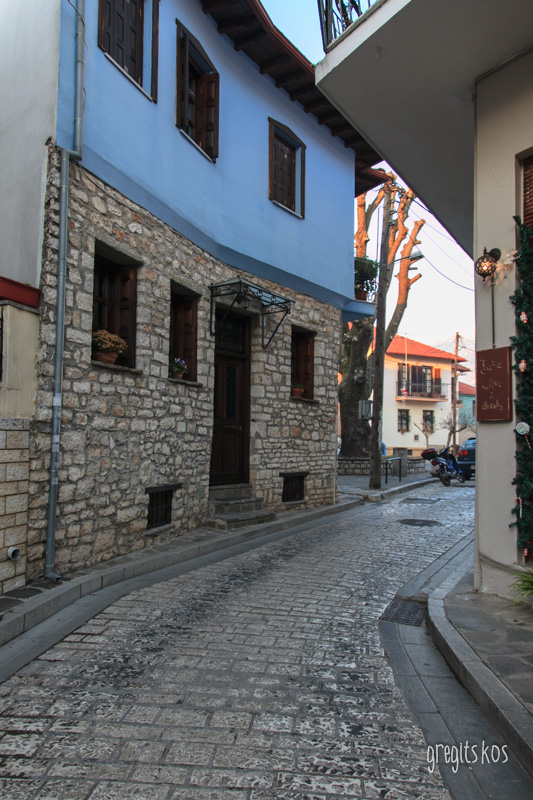 To tell the truth, all the littoral region, full of small shops and great restaurants in which the exquisite flavors are combined with lush greenery, is an ideal area for walks. The options for entertainment are many depending on tastes.
To tell the truth, all the littoral region, full of small shops and great restaurants in which the exquisite flavors are combined with lush greenery, is an ideal area for walks. The options for entertainment are many depending on tastes.
That’s how he spent our 3 days ! The next morning we decided to depart earlier in fear of the projected snowfall.
On a longer stay or if you choose to spend your time otherwise see below:
Ideas for extra visits
Just four kilometers far from Ioannina on the northwestern side of Lake Pamvotis, taking the road that leads to Metsovo-Trikala, you meet the village Perama. There is a mythical world beyond your imagination. Perama Cave was created 1.5 million years ago inside Goritsa hill, just above the village. It is one of the most beautiful caves in Europe. In a route of 1500 meters and 45 minutes (provided the mood for walking as required lifting and lowering stairs) you will discover a different world of stalactites and stalagmites, natural sculptures that surprise with their complex structure and harmony of shapes. Once you pass the cave exit stand to admire the view of the lake and feel the magic of nature. The train of Perama -Ioannina connects the picturesque village and is a nostalgic choice. In the village of Perama you can buy traditional silverware and jewelry.
On the 14th km. of Ioannina-Athens national road, near Bizani, is the wax museum of sculptor Paul Vrellis. One of the best and most impressive museums of Greece where the life sized creations of Paul Vrellis from beeswax, revive the Greek history and those who took part on it. The topics presented in the museum are: the pre-revolutionary period, the events of 1821 and images from WWII. The visit there brings back memories from our history.
12th km National Road Ioannina-Athens, Bizani, Ioannina (Tel. 26510-92128)
(Prefixes) 1 / 10-31 / 3: 10: 00-16: 00 – (Summer time) 1 / 4-30 / 9: 09: 30-17: 00
 Like a ” Pasha in Ioannina” concerning the culinary options in Ioannina was always a rich and aristocratic state. Pond fish, such as eels and trout, are, along with the particularly frogs, the Ioannina’s Kitchen trademark. The traditional sweets of Ioannina is famous throughout Greece. The famous sker patties, meaning sugary pie, the excellent baklava and other sweets are just some of the flavors that you will never forget. A completely original product, you can not find it anywhere else except at Ioannina, are liqueurs without alcohol. It is completely separate liquor, resulting from mixing organic vinegar with nectar, herbal and fruit aromas. Enjoy with crushed ice. In traditional cafes in the city to try the unique “sherbets” sweet wines with aromas of fruits and flowers.
Like a ” Pasha in Ioannina” concerning the culinary options in Ioannina was always a rich and aristocratic state. Pond fish, such as eels and trout, are, along with the particularly frogs, the Ioannina’s Kitchen trademark. The traditional sweets of Ioannina is famous throughout Greece. The famous sker patties, meaning sugary pie, the excellent baklava and other sweets are just some of the flavors that you will never forget. A completely original product, you can not find it anywhere else except at Ioannina, are liqueurs without alcohol. It is completely separate liquor, resulting from mixing organic vinegar with nectar, herbal and fruit aromas. Enjoy with crushed ice. In traditional cafes in the city to try the unique “sherbets” sweet wines with aromas of fruits and flowers.
Silver and gold
The art of the silversmith of Ioannina is one of the most important aspects of native culture. The wire or cast jewelry Epirus, the famous “tzovairia” was famous outside the Greek territory. The expression “Arta to Ioannina” meant – and means – “all the wealth of the earth.” The beautiful jewelry of Ioannina, in traditional or original designs continue to be synonymous with understated elegance.









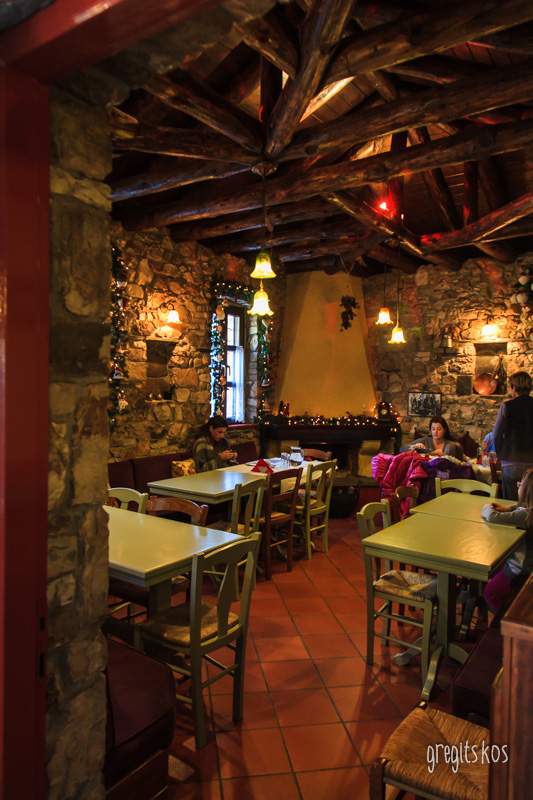

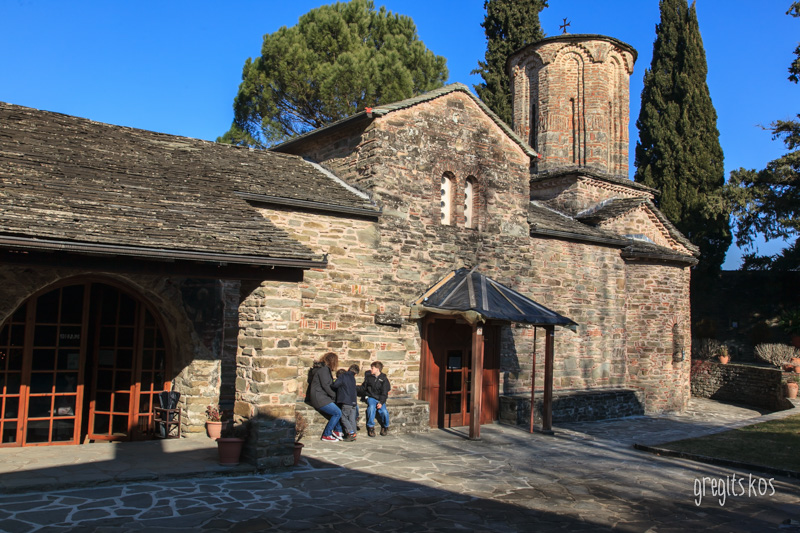


 As the boat approaches the northern part of the island and changes direction to the south, we are trying to identify the Chalandriani area, where more than 600 graves with grave goods were found (prehistoric). Shortly afterwards the bell of St. Dimitri is heard tolling and at the same time the whistle of the boat. Immediately after that we could see the characteristic hills of Ermoupolis and Ano Syros, and the pier with the Port Authority. The journey lasted for three and a half hours on Blue Star Ferry 2. A fast and comfortable journey let aside the strong wind blowing that day. There was the same feeling on our arrival, although six years have passed since our last visit. Everything was so familiar, as if we hadn’t missed anything! Matina and Michalis were waiting for us and hosted us in their home, high on the hill of the Resurrection, overlooking the stunning harbor and Agios Nikolaos church. We had so many things to talk about!
As the boat approaches the northern part of the island and changes direction to the south, we are trying to identify the Chalandriani area, where more than 600 graves with grave goods were found (prehistoric). Shortly afterwards the bell of St. Dimitri is heard tolling and at the same time the whistle of the boat. Immediately after that we could see the characteristic hills of Ermoupolis and Ano Syros, and the pier with the Port Authority. The journey lasted for three and a half hours on Blue Star Ferry 2. A fast and comfortable journey let aside the strong wind blowing that day. There was the same feeling on our arrival, although six years have passed since our last visit. Everything was so familiar, as if we hadn’t missed anything! Matina and Michalis were waiting for us and hosted us in their home, high on the hill of the Resurrection, overlooking the stunning harbor and Agios Nikolaos church. We had so many things to talk about! (For the significant and very interesting history of the island, and particularly of Hermoupolis, one can search for information on the internet or be informed by a guidebook before his visit, something that, in my opinion, is necessary in order to see this place as it deserves to be seen!)
(For the significant and very interesting history of the island, and particularly of Hermoupolis, one can search for information on the internet or be informed by a guidebook before his visit, something that, in my opinion, is necessary in order to see this place as it deserves to be seen!) Just above the triangular garden lays the church of St. Nicholas (built in 1870). A symbol for the people of Ermoupolis, with its blue dome standing out, visible from afar, the church is impressive both inside and out, day or beautifully lit at night. Lined with historic pictures, priceless offerings and precious sacred vessels, with incredible marble iconostasis, an artwork of C. Vitali, is a sight you should definitely visit! What’s more, there is an organ that works and accompanies the services, an influence of the Catholic churches.
Just above the triangular garden lays the church of St. Nicholas (built in 1870). A symbol for the people of Ermoupolis, with its blue dome standing out, visible from afar, the church is impressive both inside and out, day or beautifully lit at night. Lined with historic pictures, priceless offerings and precious sacred vessels, with incredible marble iconostasis, an artwork of C. Vitali, is a sight you should definitely visit! What’s more, there is an organ that works and accompanies the services, an influence of the Catholic churches. Getting on with our stroll in “Vaporia”, on the road that leads from Agios Nikolaos to “Doxa”, the same impressive, neoclassical mansions are located on parallel and perpendicular streets of the district. Huge buildings, with high-ceilinged rooms, impressive balconies with ornate corbels and fantastic sea view, luxury entrances with columns and knockers on the big wooden doors, a landscape of unique beauty with lush bougainvillea gushing from the walls that surround the gardens. It goes likes this as far as a mansion at the left right on the road turning, with characteristic palm trees in its garden.
Getting on with our stroll in “Vaporia”, on the road that leads from Agios Nikolaos to “Doxa”, the same impressive, neoclassical mansions are located on parallel and perpendicular streets of the district. Huge buildings, with high-ceilinged rooms, impressive balconies with ornate corbels and fantastic sea view, luxury entrances with columns and knockers on the big wooden doors, a landscape of unique beauty with lush bougainvillea gushing from the walls that surround the gardens. It goes likes this as far as a mansion at the left right on the road turning, with characteristic palm trees in its garden.
 In the same building, follow the stairs leading to the City Clock, and there is the Archaeological Museum of Syros. Relatively small, it hosts representative samples of Cycladic vessels, figurines and other findings from Chalandriani, but other islands as well. On the other side of the building, with an entrance from the side of OTE, is the Cultural Center of Syros which hosts the Museum of Cycladic Art Replicas, following the example of Athens Goulandris Museum.
In the same building, follow the stairs leading to the City Clock, and there is the Archaeological Museum of Syros. Relatively small, it hosts representative samples of Cycladic vessels, figurines and other findings from Chalandriani, but other islands as well. On the other side of the building, with an entrance from the side of OTE, is the Cultural Center of Syros which hosts the Museum of Cycladic Art Replicas, following the example of Athens Goulandris Museum. While neoclassical Ermoupolis inspired writers and poets you are transferred yo a very different scene during your visit to Ano Syros which in turn inspired songwriters with its beauty. It is the first settlement created in the island centuries ago and the historic capital of the island.
While neoclassical Ermoupolis inspired writers and poets you are transferred yo a very different scene during your visit to Ano Syros which in turn inspired songwriters with its beauty. It is the first settlement created in the island centuries ago and the historic capital of the island. TIP: For your stroll in Ano Syros, it is preferable to select evening hours, if the weather is too hot. However, in the morning it’s quite different and very beautiful! At 10:00 we were ready for coffee! Unfortunately, we did not find anything open at that time!
TIP: For your stroll in Ano Syros, it is preferable to select evening hours, if the weather is too hot. However, in the morning it’s quite different and very beautiful! At 10:00 we were ready for coffee! Unfortunately, we did not find anything open at that time!
